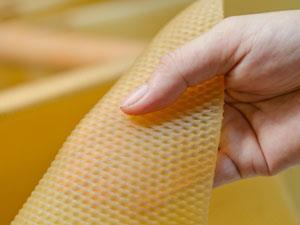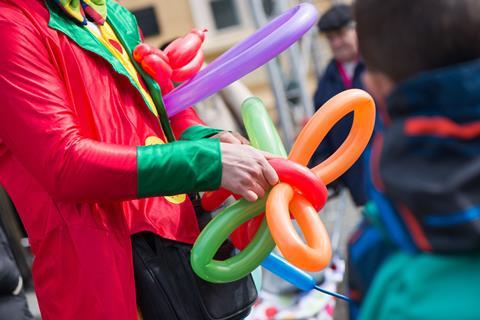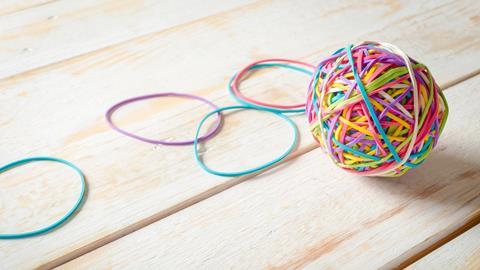Meera Senthilingam
This week's compound is stretching us to the limit. And taking us there is Jessica Gwynne.
Jessica Gwynne
What do elastic bands, car tyres, surgical gloves, ice hockey pucks and wellington boots all have in common? Traditionally, they were all made from natural rubber.

Although the western world didn't discover rubber until the 16th century, it was used as early as 1600BC in Central America by native tribes, such as the Olmecs, whose name actually means 'Rubber People'. They used it to make clothing and shoes waterproof, but archaeologists have also discovered rubber balls from this period, weighing as much as 4kg, which would have been used in a ball game that was played throughout Central America for many centuries.
Natural rubber is a polymer of 2-methyl-1,3-butadiene, which is more commonly known as isoprene. Its molecular weight is typically between 100,000 and a million, which is equivalent to between 1500 and 15,000 monomer units.
Rubber is extracted from latex, which is a milky suspension produced by some plants to heal wounds. It contains up to about 40 per cent rubber, with the rest being mainly water. Plants like lettuce and dandelions produce latex, but by far the most common source is Hevea brasiliensis, the rubber tree. It originates from the Amazon rainforest in South America, although most natural rubber is now produced from plantations in southeast Asia.

Latex is collected from rubber trees using a process called tapping, a traditional method that is still used today. A cut is made into the bark, and the latex drips out of the wound and is collected. Eventually the latex does its job and heals the wound, so the tree must be re-tapped in a different place. If it's left sitting around, the latex will naturally coagulate, so before this can happen, it's filtered and mixed with an alkali, usually ammonia. The latex can then be concentrated and used to make dipped products, such as gloves. Alternatively, acid can be added to intentionally coagulate the rubber, which can then be processed into blocks for storage and transport. In this raw state the rubber is a thermoplastic, so the blocks can be melted and moulded or extruded into whatever shape is required.
In its natural state, rubber deforms easily, but is not very elastic because the long, unbranched polymer chains can easily slide past each other. It is also very tacky, which makes it useful for applications such as adhesives. However, for the majority of its uses, rubber needs to be crosslinked, usually using sulfur, in a process called vulcanisation. Vulcanisation was discovered in 1839 by Charles Goodyear, after whom the tyre company was named. Although he claimed it was through careful research, many reports say the discovery was accidental, when he spilt a mixture of rubber and sulfur onto a hot stove and noticed that it produced a tough, firm material.
Vulcanisation crosslinks rubber by creating sulfur bridges between chains, which generally vary in length between one and eight sulfur atoms. Short crosslinks produce a more heat resistant rubber, whereas longer crosslinks produce a more elastic material. The amount of crosslinking also affects the mechanical properties - the higher the degree of crosslinking, the stiffer the rubber. For example, rubber bands have a much lower crosslink density than car tyres. On its own, sulfur is a slow, inefficient crosslinker, so accelerating agents are added to catalyse the process, and other additives are added to stop the reaction and stabilise the final product.

In an elastic band, the chains are generally coiled up. When you stretch the rubber, the sections of polymer chain between crosslinks begin to uncoil and straighten. This decreases the entropy, or disorder, of the material, meaning that when the force is removed, there is an entropic driving force causing the chains to coil back up again and making the rubber return to its original shape. This is very different to the elastic behaviour of materials such as metals, in which the bonds between atoms are stretched directly when a force is applied, and the restoring force is electrostatic.
The other interesting thing about the thermodynamics of rubber is that it becomes stiffer when the temperature increases - most materials do the opposite and become stretchier when they get hotter. The most surprising result of this can be seen in a simple experiment. Take a strip of rubber, hang a weight on it so that it is stretched, and then heat it up - because the rubber becomes stiffer, it will actually contract.
Rubber has been used in a huge variety of applications - tyres and inner tubes for transport; medical products such as gloves, catheters and contraceptives; and consumer products like clothing, erasers, balloons and sports goods. In the Far East, it is also used for seismic bearings, to prevent damage to buildings during earthquakes.

However, natural latex from Hevea brasiliensis also contains a small amount of other materials, including proteins. It is these proteins that cause the latex allergy from which many people suffer. This allergy can range in severity from a mild skin rash to anaphylactic shock, so natural rubber is slowly being replaced in many applications by synthetic alternatives.
Whether or not you're allergic to latex, the impact of rubber and other materials inspired by its sticky, bouncy rubberiness on our daily lives is enormous.
Meera Senthilingam
A versatile compound indeed. That was Cambridge University's Jessica Gwynne with the elastic, entropic chemistry of natural rubber. Now next week we sweeten things up.
Phillip Broadwith
Do you have a sweet tooth? Do you crave cakes, desserts, sweets and sugary drinks? While these foods certainly won't keep you on good terms with your dentist, they will mean that you should have plenty of energy, since sugars - and particularly glucose - are some of life's most universal sources of energy.
Meera Senthilingam
And join Phillip Broadwith to find out why glucose is such a good energy source, and how this energy is released into our bodies in next week's Chemistry in its element. Until then, thank you for listening. I'm Meera Senthilingam













No comments yet